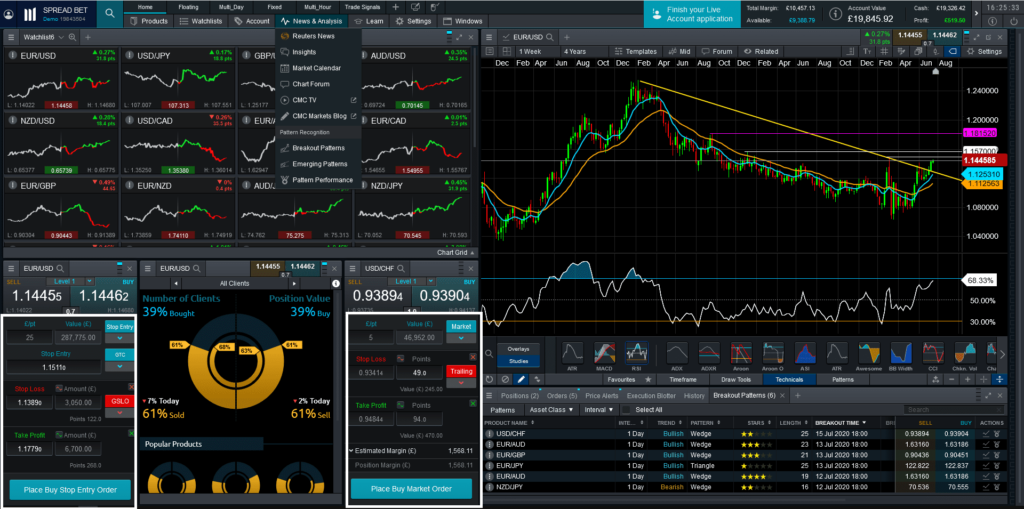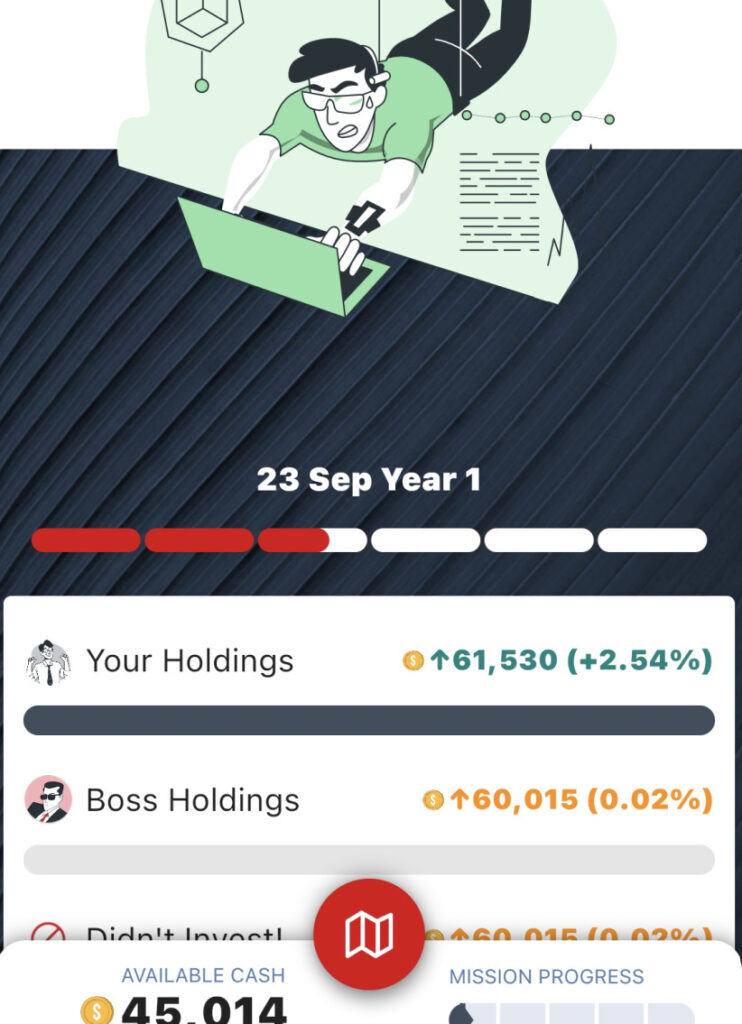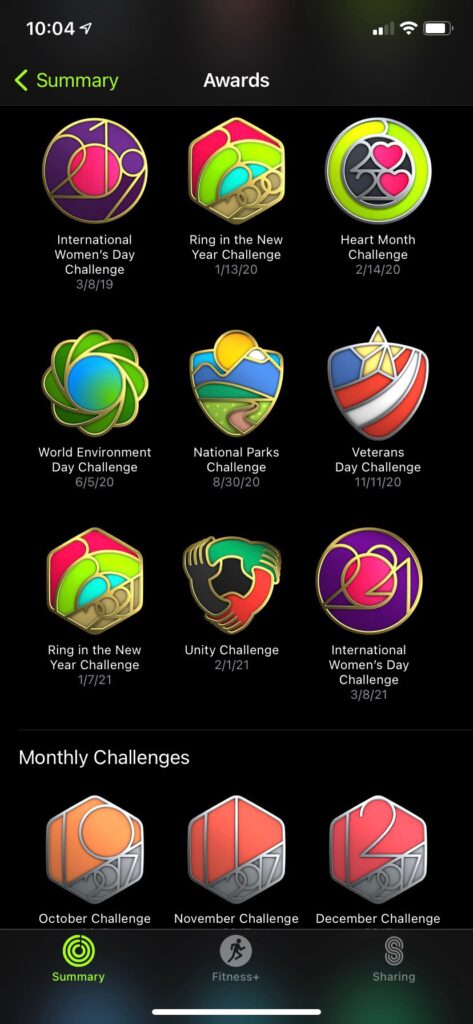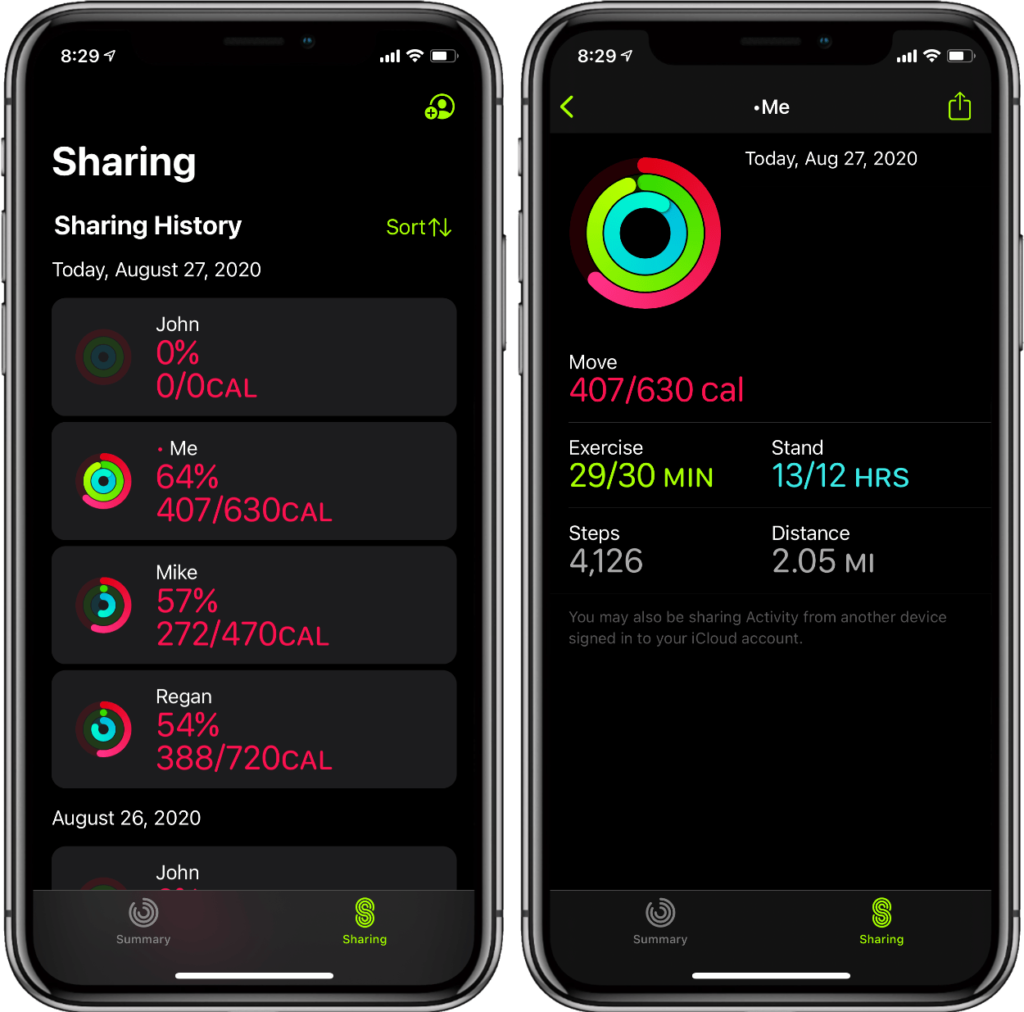The foreign exchange or FX market is the largest financial market in the world – larger than the stock market, with a daily volume of $6.6 trillion in a market worth $2.409 quadrillion. With lots of volatility and risk there are good opportunities for fees, commissions and spread revenues, inviting thousands of banks, brokers and fintechs to participate.
Where can Odyssey help deliver value and differentiate? In this article we look at content loops, the motivation cycle, virtual money and visual design as 4 of the ways that Moroku can help.
Content Loops - what they are and how they help drive acquisition and engagement?
Being great with money is complex and requires a lot of trial, error and learning. Some of this can be fast tracked through content. In a world of Snapchat, TikTok and Twitter skimmable content rules. The shortened attention span of an average internet user is about 12 seconds, demanding that content is concise, and contextually relevant. Pages and pages of content don’t connect. Odyssey Content Loops allow service providers to define content of their choosing. These endpoints are then attached to Odyssey player map coordinates for unlocking by the user. These are then pushed to the user for consumption within the app experience, web or mobile. Odyssey then monitors the consumption in terms of duration and coverage and then chooses the next step. This could be a quiz the set up of the money system such as an FX account) or habit creation
Consumers engage in FX primarily when sending money abroad to friends and family, buying and selling overseas assets, going on holiday or speculating on forex. Businesses and public agencies, small, medium and large are also engaged in FX when buying and selling international assets and within treasury functions for speculation and hedging. Airlines managing their fuel demands are a classic example. Each of these activities present opportunities for bad actors to dupe the consumer. This could be by presenting low fee but bad rate deals or other promises of wealth and glory. But they also present opportunities to educate customers on good practice as well as how the service provider differentiates. Content loops can be created by service providers within the digital experience to educate customers across this range of knowledge and do so in a way that is contextual and personalised, i.e. based on where the customer is on their journey, at the right time without the customer having to wade through masses of content on the internet. “Become an FX Champion” is a great example of a challenge that can be presented to the customer in a similar way to the Spending Challenge in the video above .
What's the motivation cycle and how could it look within FX?
Loops pervade game design. Content Loops are mini loops within a broader category of activity loops also known as the motivation cycle. Whilst player maps engage players on the broader picture , activity loops engage players in the moment, around an activity. This could be making a payment, reading some content, opening an account, completing an application, connecting to Open

Banking or one of very many behaviours and habits that make up an engaged customer. Undertsanding the activity loops and embedding these into the customer experience provide a much greater engagement than previous ease of use thinking. Such loops build empathy, engage customers with content, prepare them emotionally for action and then present the tools and money systems to get to their money work.
It is not enough to share with them that the transaction succeeded. That is table stakes. What customers want to know is what performance they achieved relative to doing it another way, with another supplier, how well they did versus other players and competitors. This is game thinking and the way to engage customers. Define the win states and give the feedback.
For commercial FX customers, Motivation, could look like positioning their quarterly FX trades with the bank relative to the market such that they can see how well they have done. This is empathy building. Although 29% of retail investors achieve capital gains, 99% of fx traders fail to make profits for more than 4 continuous quarters. Showing relative progress provides empathy, engagement around content and motivation to action when positioned contextually. Based on the result there would then be a nudge to do more or do something differently. These are set up within the “If This, Then That” rules engine. The platform , checks for Agency, i.e. that they have the ability to carry out the proposed action, then presents the action , driving the activity loop above, to take them from understanding what performance outcome they achieved from transacting with the bank to the next Action. In the above example it may be spreading single trades across multiple days to spread risk in a volatile market. The system watches for the proposed actions being executed, and upon completion, measures Outcome and presents this back as Feedback, kicking off the next cycle of the loop. Feedback can be a range of game mechanics such as messages, points or level ups.
Already you can see how this design approach presents a radically different approach to that provided be even the best FX platforms today, seen below, where standard parairs are presented for the client to wade through with no real insight on how they are doing.

How can virtual money drive learning fundamentals , engagement and usage?
Reading or hearing about investment and trading strategies through content loops, books, podcasts and videos is useful but only the beginning of the learning process. Real learnings come from doing and the best learnings are the expensive failures. Our relationship with success and failure is complex. The pressures of life to succeed are many, the fear of failure great; but history teaches us that failure is the only real pathway to success. Yet failures can be expensive and in financial markets, failures real.
Providing safe places to fail have been a feature of learning platforms across the ages. Simulation platforms are a great example of how to create such safe places to fail, with flight simulations, once of the best examples: If you are going to crash a plane, doing it within a virtual environment is the best place to do that and learn.
Moroku Odyssey exists as a set of player maps that has a set of missions within multiple leagues. These take customers on a journey with their money, allowing them to level up as they learn and get stronger with their money. Within the investing mission, a simulation environment at level 1 allows players to test out a range of investment strategies across a range of financial instruments, markets and years. Players choose an investment strategy that is run against real market data to see how well they do. They are measured according to how well they implement defined strategies as well as compared to a notional “boss investor” and just leaving their money in cash. Content loops kick in at the beginning as well as at learning opportunities, i.e. failures.

After successfully completing the mission, players can level up to using real money in real markets for the instruments and markets they have demonstrated proficiency in, with awards and rewards. Click through rates for these level ups are market beating. Players engage with the virtual money in a simulation engine because it is safe, builds confidence, teaches trading strategies and encourages them to level up as new customers, opening accounts with the institution. This is a fabulous way to invite new customers or existing customers who haven’t opened investment or foreign exchange accounts with the institution because of the perceived risk.
How does Odyssey thinking change the visual experience within FX
Whilst Moroku hasn’t conducted any UI or UX work to date within the foreign exchange segment, a number of aspects and components are likely. How these manifest will depend on the client and their use case but will almost certainly be more contemporary and engaging than the UI above and be informed by some of the design characteristics presented across screen from the Moroku retail banking experience, Moroku Money.
Odyssey rewards and engages customers across time, space and momentum. Customer effort and loyalty across Time is well understood but poorly executed and presents a raft of opportunities to compete, build empathy and recognise loyalty. Odyssey tracks time events such as how long they have been a customer as well as within missions and are presented within the customer dashboard. These can also trigger award and reward.
Space. Whilst trips to the moon and mars are interesting and the stuff of dreams, spatial dimensions across the client financial journey present much opportunity for measurement and response. Above one can see the progress to save measured and rewarded. So too within FX, measurement of key spatial axis such as currency pairs and volumes can be placed within the missions and levels and recognised. As customers grow across these spatial attributes they can unlock special tools, pricing and others services available within the company.
Momentum. Apple , Strava, Garmin and Fitbit have lead the way in physical fitness, engaging and encouraging users to stick at it and keep going, despite the never ending journey to physical health. They show us that there is no end, there is no “getting there” there is nowhere to go, there are only habits, getting better and keeping going. As within these aspects, financial services “getting there” is as much about maintaining momentum and keeping a regular cadence and pace. Aspects such as a regular rhythm of payments and repayments can be measured, reported and rewarded within the experience, by Moroku Odyssey, Moroku’s SaaS platform.


As an enormous and commoditised utility, FX businesses, like much of financial services, are prioritising engagement, loyalty and reward for attracting, retaining and growing customers. By setting up the user experience within a game architecture, with win states, challenges, misisons and level ups, a great opportunity to compete can be realised.
Moroku Odyssey provides the platform and the design process for innovative, forward thinking organisations who want to differentiate and change the game.